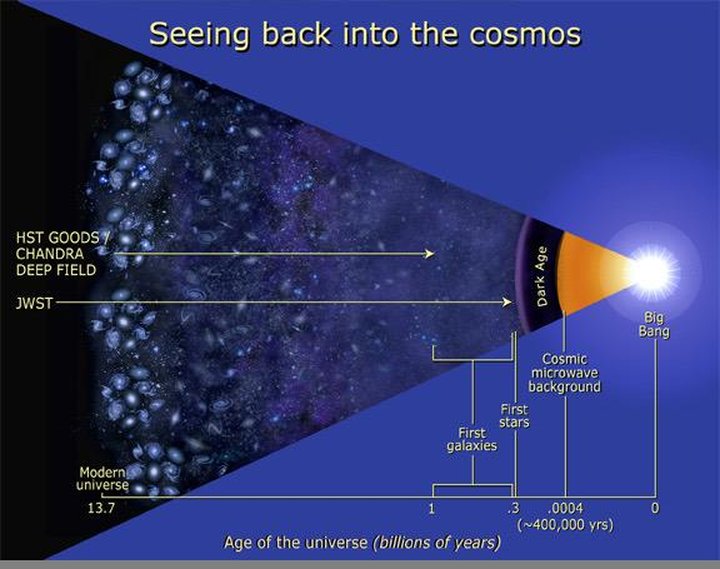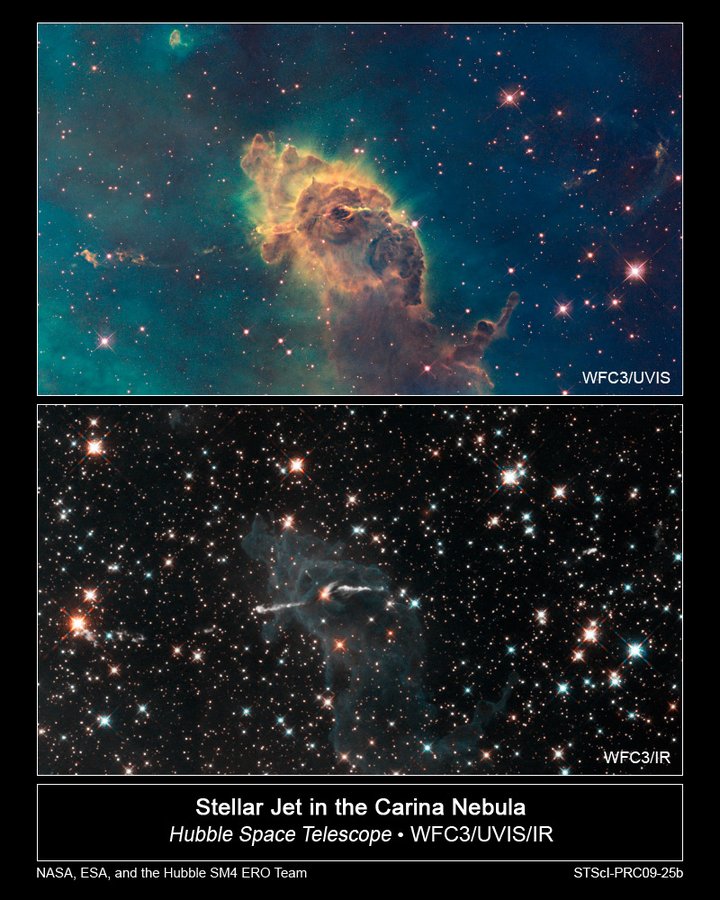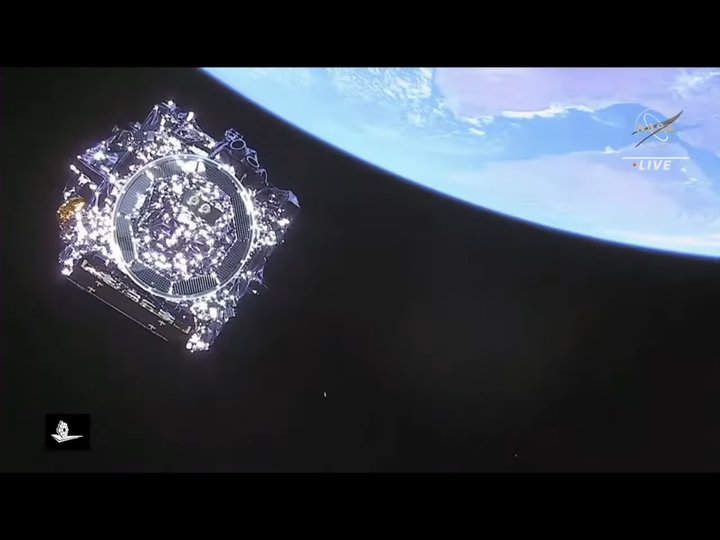For the past several years, I’ve been sharing my enthusiasm about Hubble’s successor, the James Webb Space Telescope, every chance I got. My excitement reached fever pitch when Webb was launched early on Christmas Day, and has barely subsided during its subsequent deployment. I’ve been fielding a bunch of questions, too. Here goes:
What’s Webb going to do that other telescopes can’t do?
Webb is a quantum leap in telescope technology. It’s huge for a space-based telescope, 21 feet across, meaning it can see really dim objects. And it’s infrared capable (infrared being the invisible spectrum of light beyond visible red), so it can see farther back in time than any other telescope. In addition, these capabilities will give us much more information about possible life signs on planets beyond our solar system than present instruments can.

It looks pretty in this image, but it’s actually pitch-black on the side facing away from the sun—one reason why Webb doesn’t have “selfie” cameras. (NASA)
How much farther back in time are we talking about?
Ancient light has been red-shifted by the expansion of the universe, so the deeper into the infrared spectrum we look, the farther back we can “see.” Whereas Hubble, with very limited infrared ability (because of the limitations of its low Earth orbit) can detect light from when the universe was about a billion years old, Webb should see to about 100,000 years after the Big Bang era. (100,000 years sounds a lot, but that would be like an 80-year-old human seeing herself five hours after her birth.) Meaning that it should give us information about the formation of the first stars and galaxies, and add to our understanding about how this particular universe in which we live actually came about.

(NASA)
Why not put it a low-Earth orbit, like the Hubble telescope?
Webb isn’t just larger than Hubble (with a mirror six times its area), but Webb’s infrared capability means it’ll see back farther in time and with much greater sensitivity than Hubble or any existing telescopes. Since infrared radiation from the sun, Earth and moon would swamp Webb’s sensitive detectors, its mirror has to be shielded from all three bodies, which can’t be done in low Earth orbit.
So where’s it going to be?
Webb will orbit the sun in lockstep with the Earth, but a million miles farther from the sun than Earth, where its sunshade will shield its mirror simultaneously from the sun, Earth and moon.

(NASA)
How can it orbit the sun at the same rate as the Earth if it’s farther out—I thought the farther out you were, the longer the orbital period?
That’s the beauty of where it’s going to be, near L2, the second “Lagrange point.” L2 is a sweet spot a million miles beyond Earth where the combined gravitational pull of the sun plus Earth exactly balances the centripetal force there.
So it’s just going to sit at the L2 point?
No. If it did that, sunlight would be blocked by the Earth, putting Webb’s five solar panels in the shade. Instead, it’ll be in a six-month “halo orbit” around L2, where it will receive constant sunlight and still be able to shield its dark side (the mirror side) from sun, Earth and moon radiation.
Why not just put it on Earth then?
Water vapor in our atmosphere absorbs most infrared energy before it reaches us, so an infrared telescope has to be above Earth’s atmosphere, i.e. in space. Another advantage of infrared is that it cuts through the space dust that blocks visible light. Compare these two images from Hubble of the Carina Nebula: the top one is taken in ultraviolet and visible light, the bottom one in infrared.

(NASA)
Besides looking at the early universe, what else will Webb be doing?
It’s an ideal instrument for analyzing potentially life-bearing planets around other stars in our galaxy. It’ll also be investigating so-called “dark matter,” the invisible stuff thought to make up over a quarter of our universe (i.e. far more abundant than visible matter). And it will give us unprecedented clear views of planets and moons in our own solar system.
What’s the status of the Webb telescope now?
Because the mirror is so large—about 21 feet across—it had to be folded origami-style to fit into the rocket that launched it, a specially adapted European Space Agency Ariane 5. Also the sunshade, five tennis-court size thin layers of silicon-coated plastic, was rolled up. So in the two weeks after launch, the telescope unwrapped itself like a flower, culminating with the two “wings” (each comprising three mirror segments) unfolding on January 7 and 8. At this point most, but not all, of Webb’s 344 “critical failure points” are now retired. Possibly the most critical operation now is the third MCC (mid-course correction), the “burn” that will put it into its halo orbit around L2. That’s scheduled for 29 days after launch, a week from today.
This GIF shows the two “wings” of the 18-segment telescope mirror unfolding from their launch configuration. Each movement took about five minutes in real time. NASA via GIPHY
And then we’ll see images from Webb?
Nope, that won’t happen until June. It’ll take that long for it to cool down to operating temperature (minus 380 degrees Fahrenheit) and to adjust its 18 hexagonal mirrors so they operate as one. To give some sense of why it’s going to take so long, each mirror has six “actuators” on its back to slightly change its geometry, which will be finely adjusted to about one-thousandth the thickness of a piece of paper.
If there’s a problem, can it be fixed, like they fixed Hubble?
No, it will be a million miles away and wasn’t designed to be repaired. Hubble, orbiting 340 miles overhead, was.
Who’s James Webb?
James E. Webb, 1906-1992, was NASA’s second administrator from 1961 to 1968, overseeing the bulk of the Apollo program. He also established scientific research as a core NASA activity.

Our last view of Webb on Christmas morning following the spring-assisted separation from the upper stage of its specially-adapted Ariane 5 rocket. Sixteen days later, it had unfolded itself into the final configuration. (NASA)
I’ll do an update on the Webb telescope once it’s finally configured and able to actually do science.
CLICK TO MANAGE